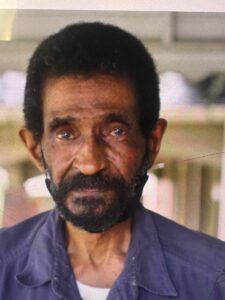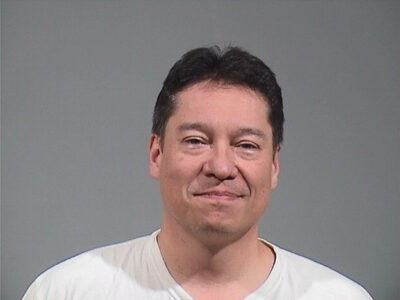Youngstown steel museum examines its roots as 30th anniversary ends

Corresondent photo / Thomas Welsh... Marcelle Wilson, site manager of the Youngstown Historical Center of Industry and Labor, left, and Donna DeBlasio, emeritus professor at the history department of Youngstown State University, take a break in the facility’s Bitonte Family Welcome Lobby after Thursday’s lecture to close out the museum’s 30th anniversary celebration.
YOUNGSTOWN — The Youngstown Historical Center of Industry and Labor concluded its 30th anniversary celebration with a talk delivered by Donna DeBlasio, a professor emeritus at Youngstown State University’s history department, who was there since the beginning.
“I’m happy that, after 30 years, the center is still here and doing better than ever,” said DeBlasio, who reflected on the challenges involved in developing a museum dedicated to the Mahoning Valley’s once-vibrant steel industry.
DeBlasio was the fourth and final speaker to participate in the center’s monthslong anniversary celebration. Previous speakers were Bill Lawson, executive director of the Mahoning Valley Historical Society; Tom Leary, a retired professor of YSU’s history department; and Angelica Diaz, executive director of Organizacion Civica y Cultural Hispana Americana (OCCHA).
Those gathered for the presentation included university faculty members, civic leaders and residents with personal connections to the local steel industry. The talk was followed by a question-and-answer period, and guests were invited to share in a cake prepared for the occasion.
HISTORY OF THE CENTER
When discussing the history of the center, which opened to the public in 1992, DeBlasio stressed that its roots trace further back. In 1977, the late state Sen. Harry Meshel first proposed the idea of a museum to commemorate the area’s rapidly declining steel industry. He soon found supporters for the project, and a planning office was opened in downtown Youngstown in 1978.
Early on, the project won the support of the Columbus-based Ohio History Connection (then the Ohio Historical Society), which initially planned three historical sites in northeastern Ohio. However, only the Youngstown project came to fruition.
The plan initially focused on the preservation of the Jeannette Blast Furnace, a centerpiece of Youngstown Sheet & Tube Co. When that project proved impractical, supporters shifted their focus to the option of a standalone museum. Meshel, who was then a state lawmaker, helped secure $4.3 million in funding from the state to build the facility, and a groundbreaking ceremony took place in 1986.
“This site was deliberately chosen because of its proximity to Youngstown State University and the downtown,” DeBlasio explained, noting that the property had served as the sloping site of a former railyard, and there was no need to raze existing structures.
While provisions for state funding required the involvement of an Ohio-based architectural firm, there were no restrictions on that firm working with an architect who was based elsewhere. Youngstown’s Raymond J. Jaminet and Partners eventually secured the services of post-modern architect Michael Graves, whose achievements included the Team Disney Headquarters in Anaheim, California, and The Portland Building in Oregon.
“Since it’s designed by a world-class architect, this center is really a landmark building,” DeBlasio said. “The fact is, we have a number of landmark buildings in this community — including the Butler Institute of American Art and the McKinley Memorial in Niles — but it’s nice to be situated in one of them.”
Graves’ whimsical post-modern building was completed in 1990. Yet, in the absence of a permanent exhibit, the Ohio History Connection was forced to assemble a temporary exhibit in the museum’s lobby.
“It takes time to build a permanent exhibit in about 7,500 feet of exhibit space,” DeBlasio noted. “Design and construction were all in-house, and the OHC sent a design team here to start building it.” The process took about two years, she added.
When the permanent exhibit, “By the Sweat of Our Brows,” was completed in 1992, the museum’s largest acquisition was a massive pulpit (an enclosed control unit) from Cleveland’s LTV Steel.
By 2002, however, this piece was rivaled in size by George Segal’s “The Steel Makers,” an outdoor sculpture featuring an open-hearth furnace. Following its restoration, the sculpture, once located in downtown Youngstown, was permanently installed on the museum grounds.
YSU TAKES LARGER ROLE
Today, the Youngstown Historical Center of Industry and Labor is one of 57 OHC sites around the state, but the OHC’s relationship with those sites has changed markedly. In 2010, the OHC, faced with budget considerations, set out to find local partners to operate their various sites — and YSU’s history department emerged as a logical option.
“Up to that point, the university was passively involved, as a pass-through for money to be spent here,” DeBlasio explained. “But the OHC reached a formal agreement with YSU’s history department…especially since we have public and applied history programs, as well as the Center of Applied History,”
The university’s more active relationship with the Youngstown Historical Center of Industry and Labor has eased the facility’s staffing issues, while also creating opportunities for graduate students seeking hands-on experience in a museum.
“Our partnership with the university is important, especially in the case of the applied history program, as it provides us with the graduate assistant interns who work here,” noted Marcelle Wilson, the center’s site manager. “They’re responsible for a lot of the work we’ve been able to share with the public, and the university provides students who run the front desk and handle other tasks related to the center’s day-to-day operation.”
The center’s two graduate assistant interns, who work 20 hours per week — nine months per year — receive an annual stipend from the state of Ohio, which is matched by a tuition remission from the university.
DeBlasio indicated the arrangement is mutually beneficial. “With two part-time graduate assistant interns, the museum gets the equivalent of one full-time employee,” she said. “Meanwhile, the students learn all aspects of running a museum, everything from…cataloguing artifacts to working in the archives to organizing collections. Anytime you can point to professional experience, it gives you a real advantage moving forward.”
She indicated that one graduate of the program currently works at the Ohio Historic Preservation Office. “The person she replaced had retired, and that person also had a degree from this program,” DeBlasio said.
“We had two students who were admitted, in two consecutive years, to Middle Tennessee State University, which has a Ph.D. program in public history,” she added. “They admit one student a year, fully funded, and both of those students had been assistants here.”
CENTER’S OUTREACH GROWS
Meanwhile, the museum helps area residents come to terms with the community’s complicated –often contested — industrial past. “Personally, I’m on the side of the worker, since my own relatives were union members,” said Wilson, who teaches classes at YSU.
“But I tell both sides of the story. I try to allow people to ask questions and reach their own conclusions, and I try not to paint any group in a negative light because we can learn from each part of that story,” she added.
Outreach to the community has included events such as a popular 2014 symposium titled “Italians in the Mahoning Valley,” which featured YSU faculty and alumni. The center also has partnered with institutions throughout northeastern Ohio. In 2013, for instance, a traveling exhibit developed by graduate students in YSU’s history department was presented at the Cleveland Public Library and Massillon Museum. Titled “Labor and New Deal Art,” the exhibit was designed to commemorate the 75th anniversary of the “Little Steel Strike of 1937.”
Additionally, the center has organized educational programs. “Through grants, we’ve been able to hire an educator who goes into local classrooms and provides 21st century skills using our resources and artifacts and documents,” Wilson explained. “She’s also able to visit local skilled-care facilities to provide ‘Sparking Memories’ programs, which are designed to help people dealing with memory loss…. She uses some of our resources to help ignite their long-term memories, which are usually less affected by disease.”
After the presentation, DeBlasio shared some of her hopes for the center’s future. “I’d like to see an updated permanent exhibit, which we’ve been working on, on and off, for the past several years,” she said. “We probably need $600,000 or so to complete the project…. There are parts of the current exhibit that we would obviously keep. You don’t throw out the baby with the bathwater…but there are new interpretations.”
At the same time, there are many reasons to be hopeful — and grateful.
“We have lots of friends,” she added. “We have a dedicated staff…and it’s wonderful having the students here.”
news@vindy.com



